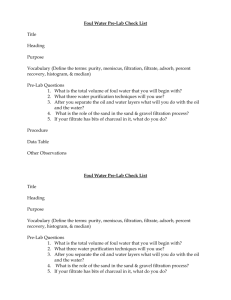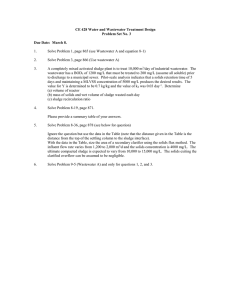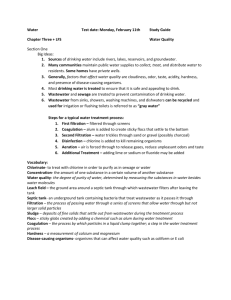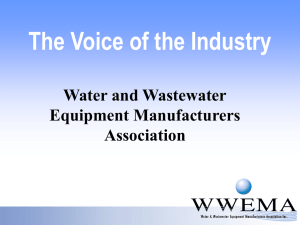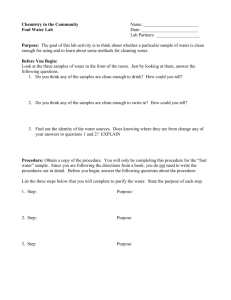Lab: Foul Water
advertisement
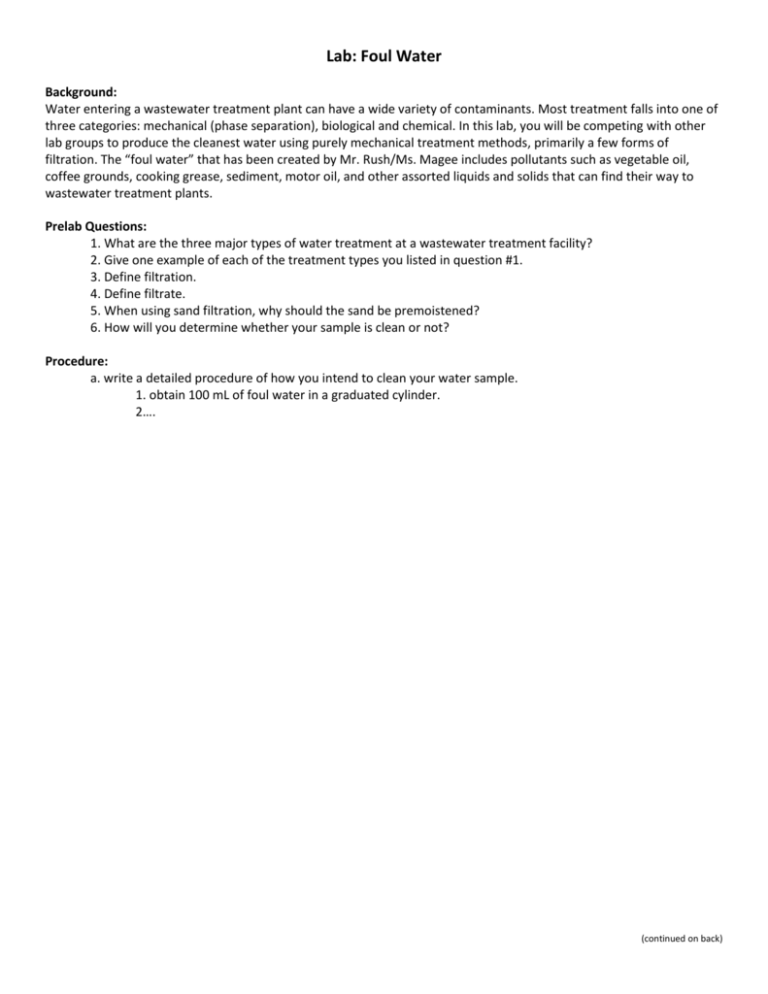
Lab: Foul Water Background: Water entering a wastewater treatment plant can have a wide variety of contaminants. Most treatment falls into one of three categories: mechanical (phase separation), biological and chemical. In this lab, you will be competing with other lab groups to produce the cleanest water using purely mechanical treatment methods, primarily a few forms of filtration. The “foul water” that has been created by Mr. Rush/Ms. Magee includes pollutants such as vegetable oil, coffee grounds, cooking grease, sediment, motor oil, and other assorted liquids and solids that can find their way to wastewater treatment plants. Prelab Questions: 1. What are the three major types of water treatment at a wastewater treatment facility? 2. Give one example of each of the treatment types you listed in question #1. 3. Define filtration. 4. Define filtrate. 5. When using sand filtration, why should the sand be premoistened? 6. How will you determine whether your sample is clean or not? Procedure: a. write a detailed procedure of how you intend to clean your water sample. 1. obtain 100 mL of foul water in a graduated cylinder. 2…. (continued on back) Data: color clarity odor oil present? (y/n) solids present? (y/n) Before treatment volume (mL) 100 After step one After step two After step three Final sample Lab Group Clarity Rank Volume Total Points 1 150 + = 2 130 + = 3 110 + = 4 90 + = 5 70 + = 6 50 + = 7 30 + = 8 10 + = 9 0 + = Analysis: 7. What volume of water did you lose during the treatment process? 8. Describe sources of water gain and loss from your sample. 9. What percent of the original 100 mL did you recover as “clean” water? 10. What methods proved most beneficial in the treatment process? 11. How did your sample compare with that of other lab groups? 12. How did your treatment process compare with that of other lab groups? 13. Describe how these processes are similar and dissimilar to wastewater treatment plants.




